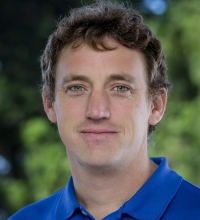PROJECT HIGHLIGHT
Researchers are developing reliable hatchery techniques for year-round production of California yellowtail fingerlings to support the emerging U.S. marine aquaculture industry as regulatory barriers for offshore farming begin to fall.
PROJECT SUMMARY
As regulatory barriers start to come down for offshore farming in Southern California and the Gulf of Mexico—NOAA's two initial Aquaculture Opportunity Areas—and land-based recirculating aquaculture systems expand nationwide, the marine aquaculture industry needs a steady supply of commercially viable fish species. California yellowtail represents a high-value opportunity, with global production exceeding 130,000 tons annually, but current farming operations rely heavily on wild juveniles for stocking. With growing demand for nutritious fish and limited wild juvenile supplies, developing reliable hatchery techniques has become essential for sustainable industry growth.
California Sea Grant Aquaculture Specialist Luke Gardner, in collaboration with Senior Research Scientist Mark Drawbridge at Hubbs-SeaWorld Research Institute, is working to develop dependable broodstock, hatchery and larval rearing technologies for California yellowtail (Seriola dorsalis). Their research focuses on improving hatchery efficiency and fingerling quality to ensure economically viable domestic commercial production. With several commercial yellowtail farms proposed and undergoing permitting review in the U.S., including offshore operations in Southern California, this work will establish techniques that eliminate reliance on wild collections.
The research team has achieved significant milestones across multiple project objectives. They successfully extended the natural spawning season from six to eight months through environmental controls while maintaining egg quality, and identified key nutritional requirements for optimal broodstock performance. In larval rearing trials, researchers determined that specific light intensity and temperature conditions can achieve swim bladder inflation rates of over 80%, with commercial-scale production runs demonstrating 70% inflation rates and 26% survival from egg to 46 days post-hatch. The team is now designing a modular hatchery system capable of producing 1.2 million juveniles annually and developing a comprehensive manual to share their findings with the broader aquaculture community.
 Luke Gardner
Luke Gardner